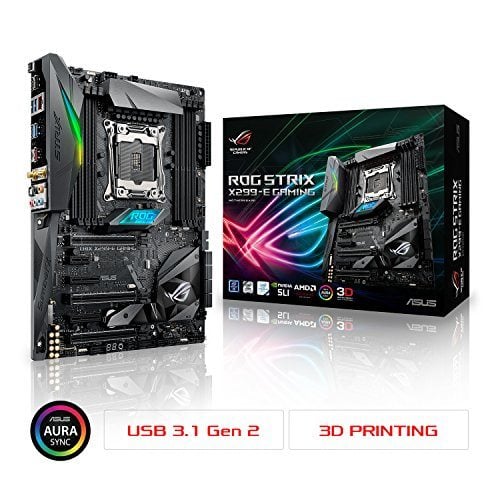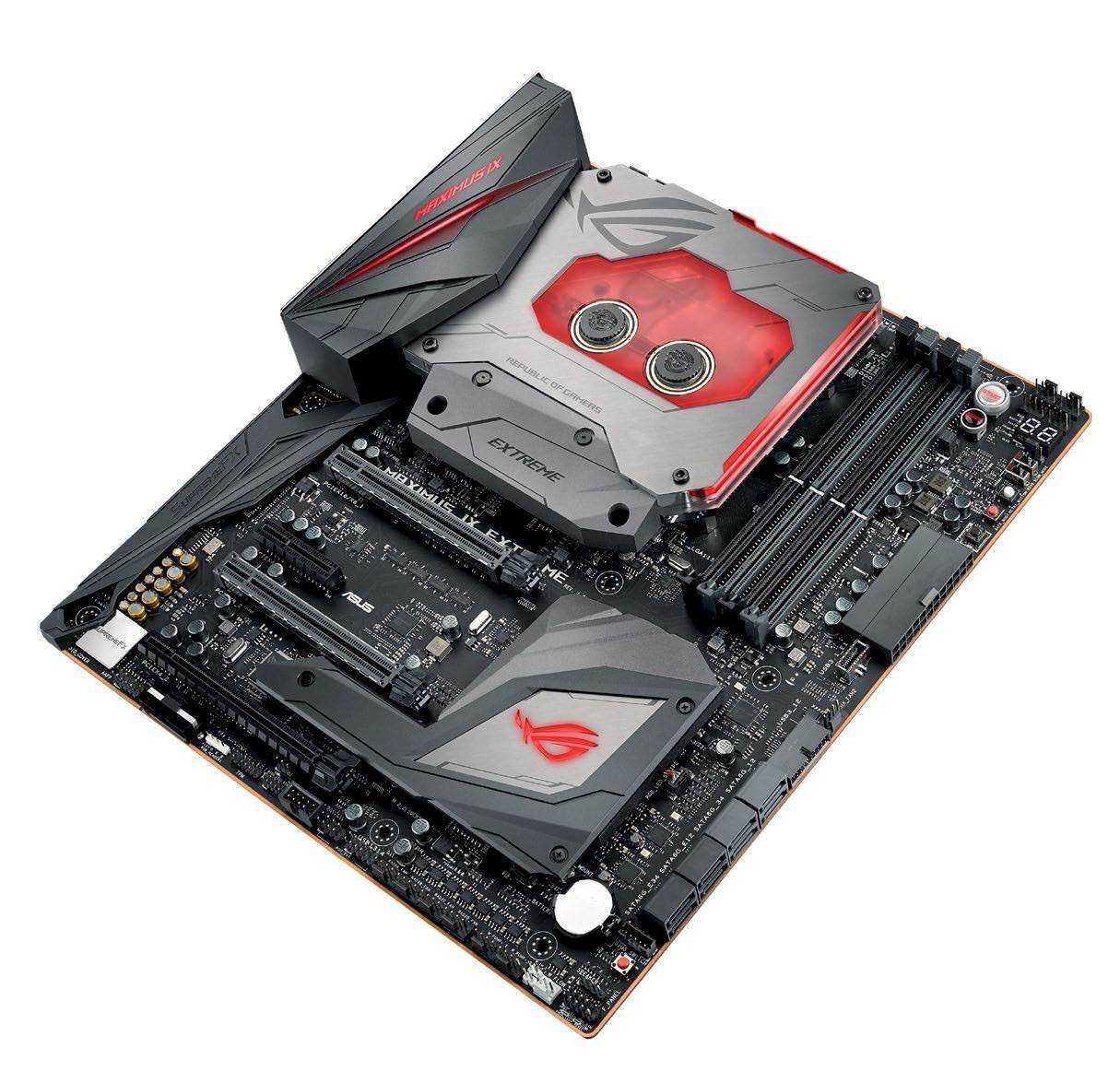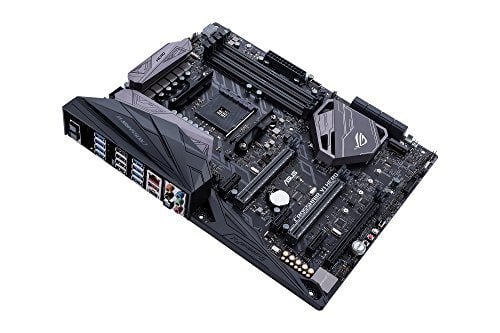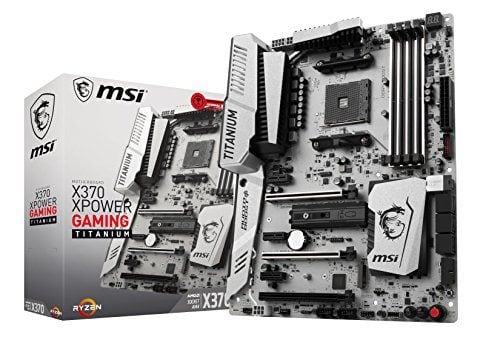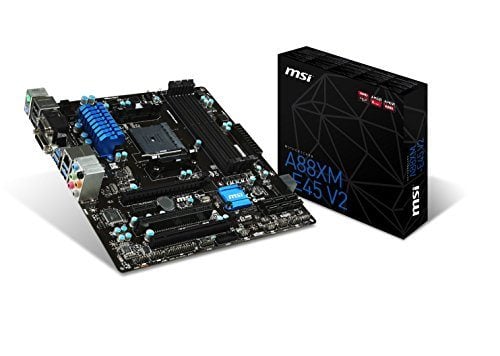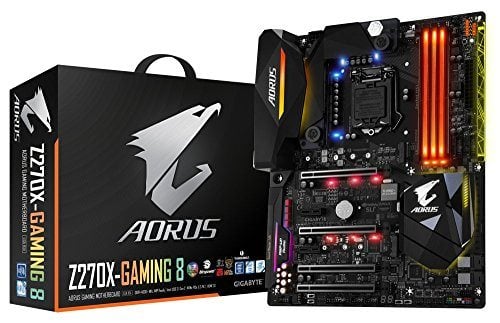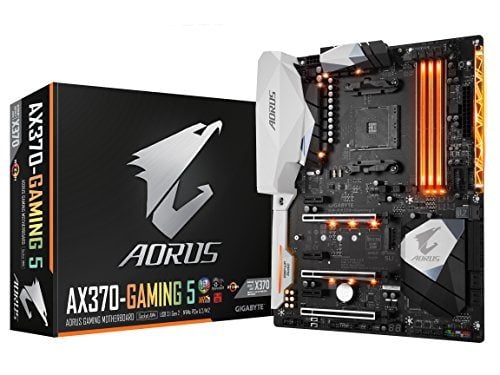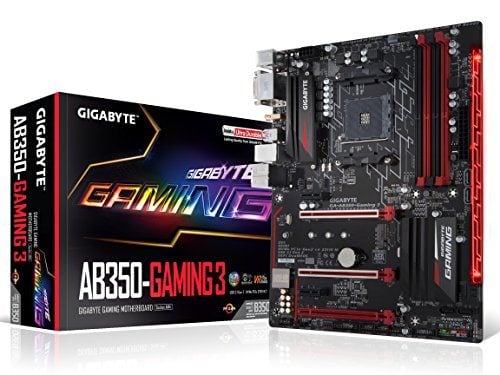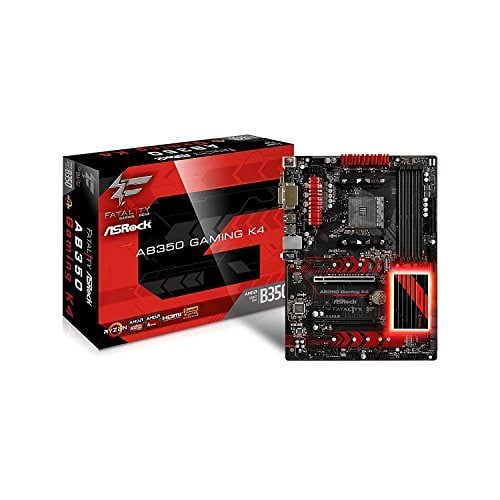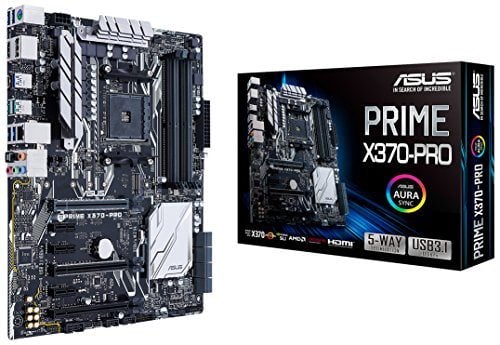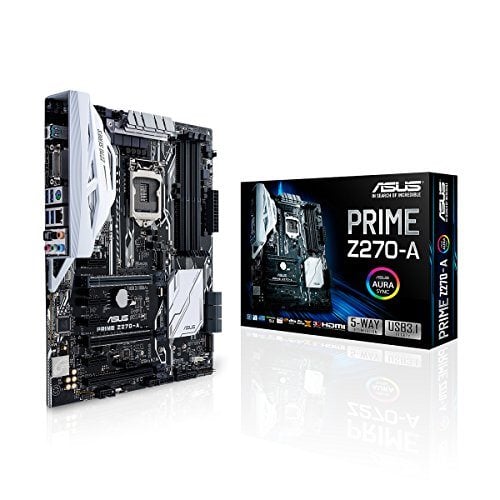Motherboard
Motherboards
It might seem that your choice of motherboard is fairly straightforward; Intel or AMD compatible, depending on the CPU you are going to use. However, if you want to get the best out of your new PC, you really need to choose a motherboard based on your main usage aims. A gaming motherboard will offer very different features to one designed for general use or office work. Over the next few pages we will look at the many different motherboard options available to you.

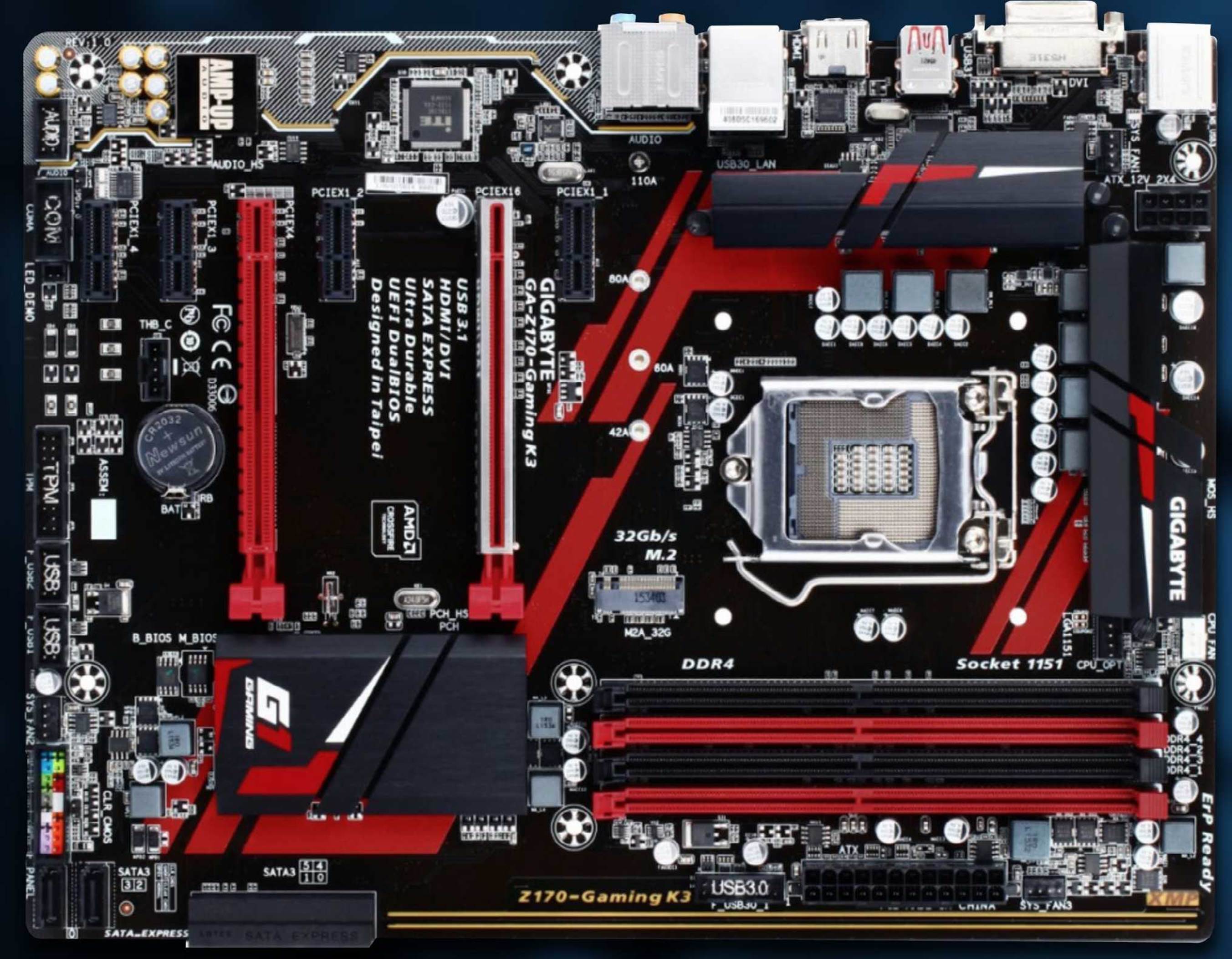
Table of Contents
- Choosing a Motherboard
- ASUS ROG Strix X299-E Gaming Review
- Asus Maximus IX Extreme Review
- ASUS ROG CROSSHAIR VI HERO Review
- MSI X370 XPower Gaming Titanium Review
- MSI A88XM-E45 Review
- Gigabyte Aorus Z270X-Gaming 8 Review
- Gigabyte Aorus AX370 – Gaming 5 Review
- Gigabyte GA-AB350-Gaming 3 Review
- ASRock Fatal1ty AB350 Gaming K4 Review
- Asus Prime X370-Pro Review: Die for that won’t kill your wallet
- MSI H270 Tomahawk Arctic Review: Thankfully not frozen in time
- Asus Prime Z270-A
START BUILDING
Motherboard: Gigabyte Z170-Gaming K3 (Intel, ATX)
Choosing a Motherboard
The motherboard (or mainboard) in your PC is the foundation of everything else you plan to add, so it makes sense to ensure you choose the best one possible.
INTEL OR AMD
Your only real choice of processor is going to be between Intel and AMD and so your choice of motherboard is going to be based initially, on which processor type you have decided to go with. Intel are the market leaders, with the fastest and most powerful processors among their range. However, AMD make some very good processors and they tend to be considerably cheaper; so if you are on a very tight budget, this could be an option. Once you have decided which to use, your search for a motherboard can be narrowed down slightly.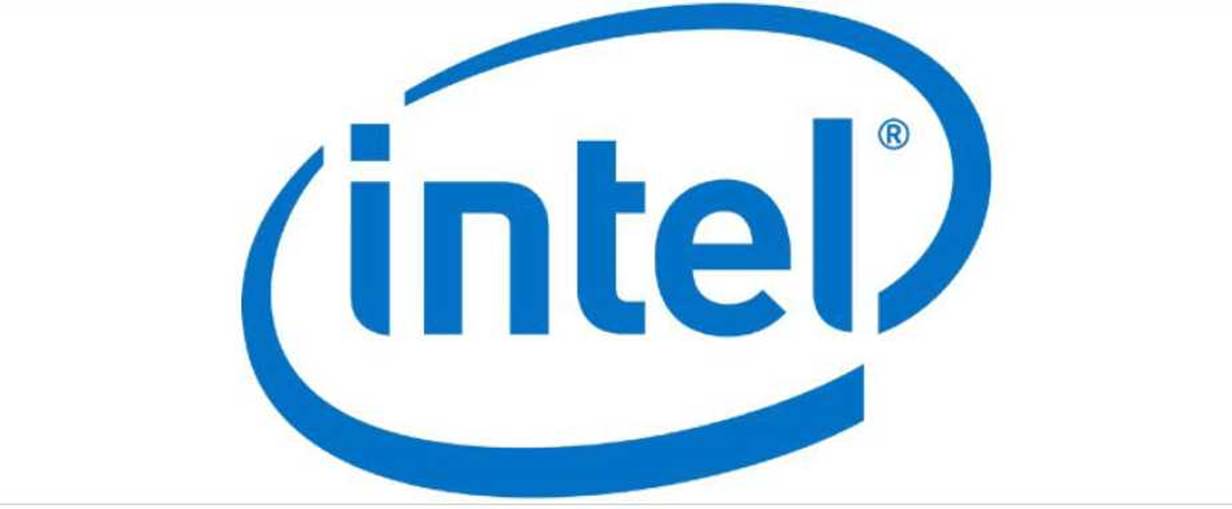
SOCKET TYPE
Although all processors might look, on the outside, pretty identical they are almost continually being improved and updated, and will only fit into certain sockets. Once more your motherboard choice is going to be dictated by the processor you plan to use.
We are using an Intel Core i5-6600K processor in our build, so our motherboard had to have an LGA 1151 socket. It wouldn’t have fitted into the slightly newer LGA 2011 socket used by an Intel Core i7-6800K. AMD use a different but similar system.
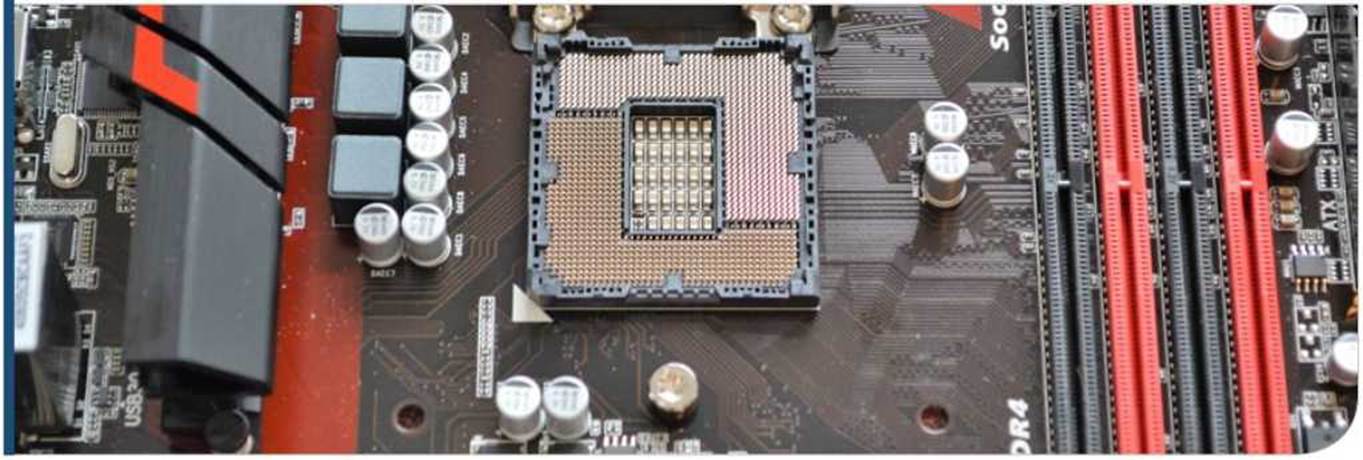
CHIPSET (INTEL)
Assuming you have chosen to build with an Intel CPU, the next step to narrowing down your motherboard search is to choose a chipset. A chipset is simply a set of electronic components in an integrated circuit, so chipset types are really just a way of denoting different combinations of motherboard features. Choosing between them is usually about what you plan to use the PC for mainly. Gaming chipsets like Z170 and Z97 Express tend to allow overclocking and multiple graphics cards. H chipsets (H97, H110, etc.) are usually more mainstream, losing the overclocking feature for example. Q and B chipsets are aimed more at business or non-media builds.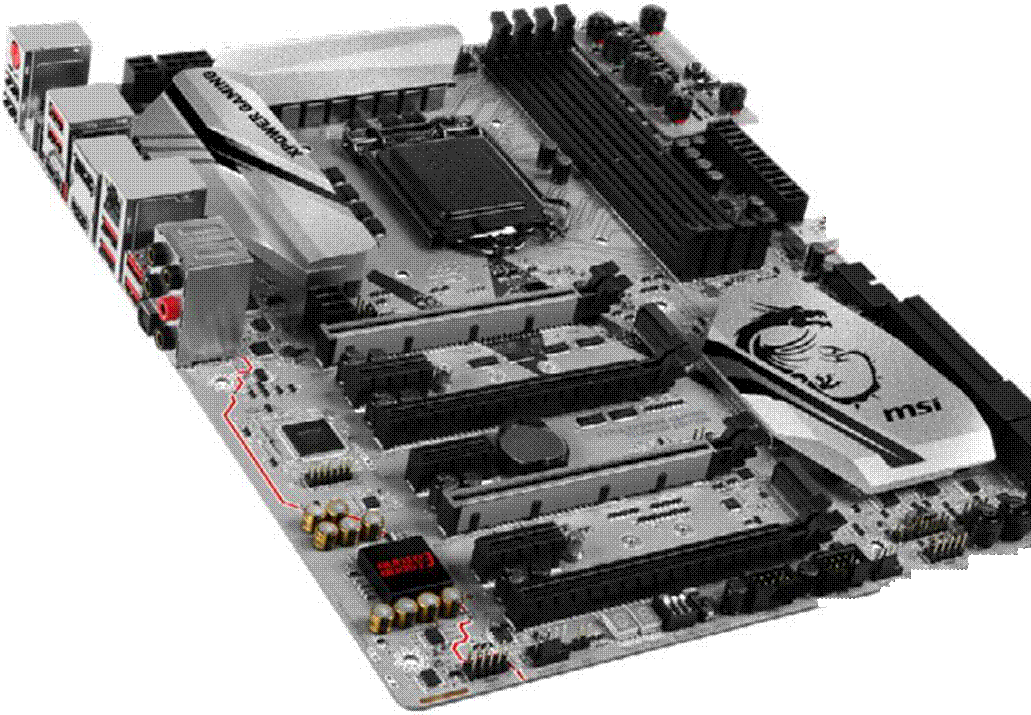
FORM FACTOR
Hopefully you now know the socket and chipset type you want your motherboard to have, so now it is time to decide on the size or form factor of the board. Motherboards are unequally divided into four main sizes (largest to smallest): E-ATX, ATX, mATX and ITX (or Mini ITX). Whilst it is possible to find boards in each size with a full complement of features, this is more about matching the motherboard to the case you are using, or vice versa. E-ATX boards will only fit in E-ATX cases; ATX will fit in ATX and often E-ATX; mATX will fit in ATX and mATX cases; and ITX normally only fits in ITX cases. ATX is the most standard of the sizes, so you will have a better choice and be more likely to get a good deal.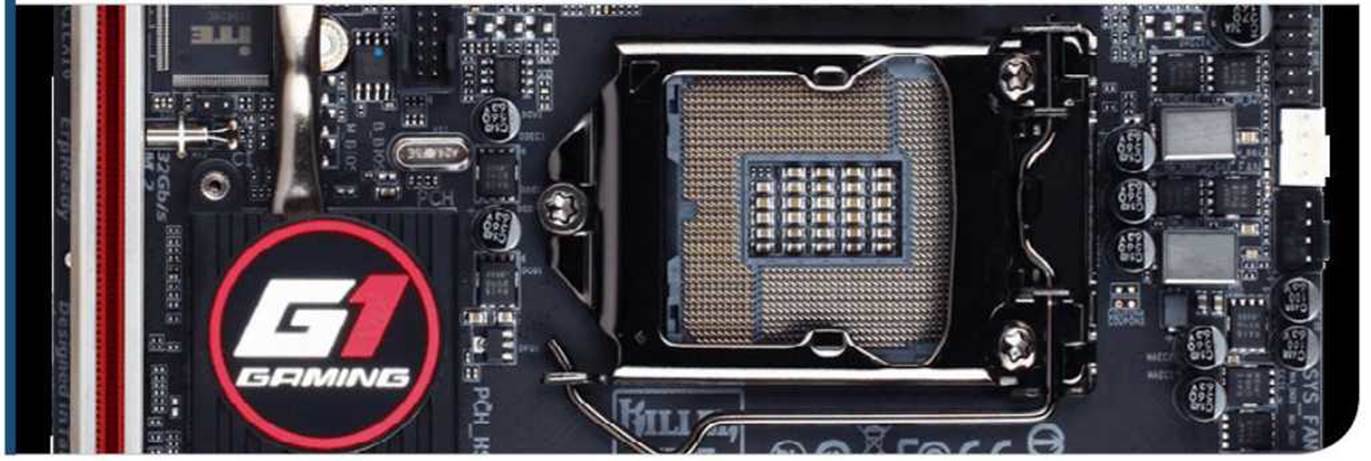
MOTHERBOARD FEATURES
Most current motherboards offer a broadly similar range of sockets, ports and features. Most if not all, will include multi-channel on-board audio, multiple SDRAM sockets, PCIe sockets, basic on-board graphics, LAN port, HDMI and DVI support, and much more. However, and as with everything, the more you spend the more you can expect. Gaming motherboards may feature lighting and on-board cooling; media boards may give you 7.1 channel HD audio and extra USB 3 connections. Think about what you want to do with your PC and try to find a board that offers the level of features you want.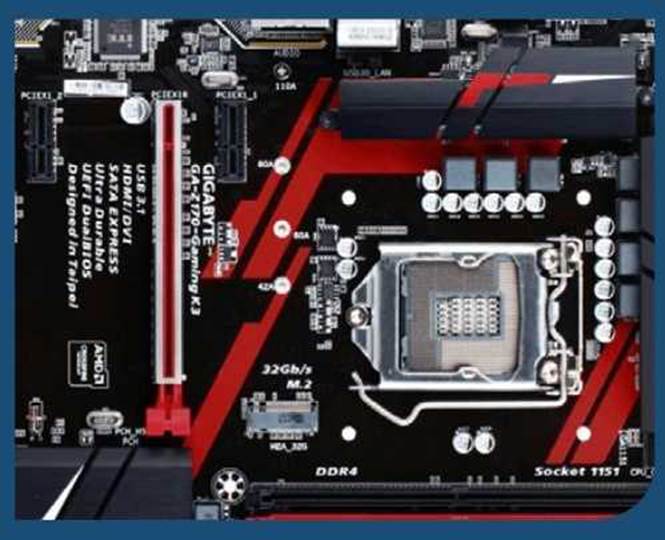
CPU SOCKET COMPARISON
Intel and AMD processors use completely different types of socket, so an Intel CPU won’t fit into AMD motherboard.
Intel LGA 1151 Socket
Intel processors are built with the contact pads on the bottom of the chip and the pins that connect to those contacts are in the socket on the motherboard.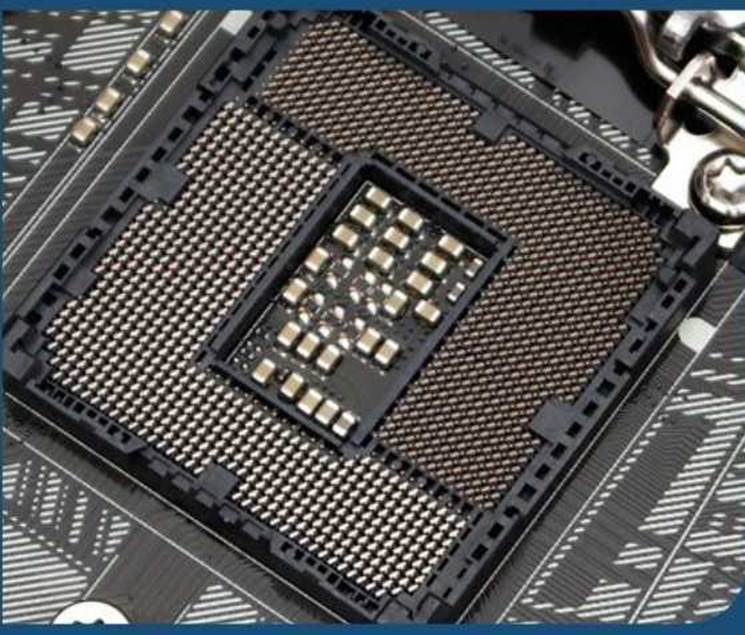
AMD AM3+ Socket
AMD processors are made the other way around, with the pins on the bottom of the processor, which fit into individual contact points in the motherboard socket.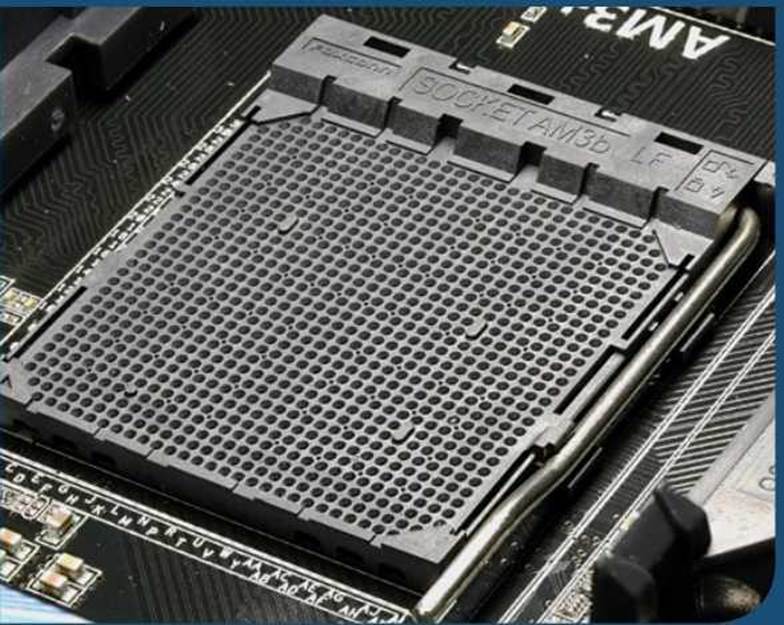
Recommended Minimum Specification
The motherboard you choose for your build needs to be up to a variety of tasks, be able to support a number of components and be suitable for your daily use. The exact specification you need may well be different to the specification another builder needs but there is certainly a base level of features you should look out for when you make your choice.GAMING/MEDIA BUILD
With a gaming or media build, you’ll be needing support for HD displays, faster memory, etc. 4 x DDR3 or DDR4 DIMM sockets supporting up to 64 GB of system memory Dual channel memory architecture Support for DDR3 1600/1333 MHz memory (minimum) Support for Extreme Memory Profile (XMP) memory modules Integrated Graphics Processor – Intel HD Graphics support Sli or CrossFire Support 1 x D-Sub port, 1920×1200@60 Hz 1 x DVI-D port, 1920×1200(5)60 Hz 1 x HDMI port, 4096×2160(5)24 Hz High Definition Audio 2/4/5.1/7.1 channel High Speed LAN chip (10/100/1000 Mbit) 1 x PCI Express x16 slot, running at x16 (PCIEX16) 1 x PCI Express x16 slot, running at x4 (PCIEX4) 2 x PCI Express x1 slots 2x PCI slots 1 x M.2 Socket 3 connector 3 x SATA Express connectors 6 x SATA 6Gb/s connectors Support for RAID 0, RAID 1, RAID 5 and RAID 10 up to 8 x USB 3.0/2.0 ports 6 x USB 2.0/1.1 ports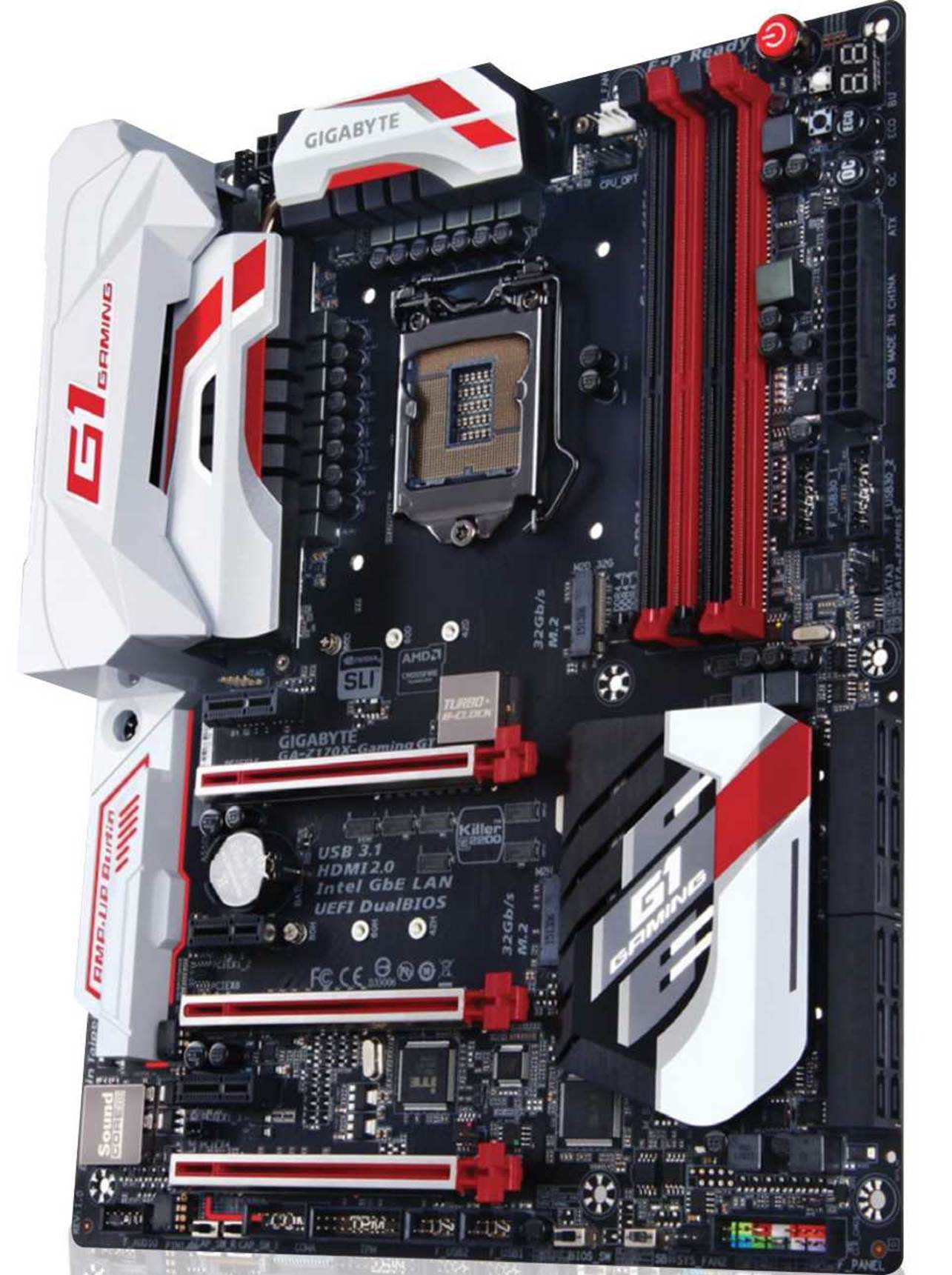
WHAT IS BIOS?
The BIOS (Basic Input/Output System) is an often overlooked but absolutely vital part of your computer system. The BIOS is particular to each type of motherboard and is provided by the motherboard manufacturer. You see it every time you switch your computer on and it’s responsible for those lines of text that flash up on the screen before Windows launches, listing things like installed RAM and other hardware details.
It’s the core software of your system and boots up the computer, launches Windows and in some cases allows Windows and other apps to access things like hard drives, the keyboard, USB connections and other hardware components. The BIOS is built in to your system and is stored on a type of flash memory chip on your computer’s motherboard. For this reason it is often referred to as “firmware”, since it is in part both software and hardware.
You can see which version of the firmware your particular motherboard ships with by looking for the label printed on the board itself. You can then check on the manufacturer’s website to see if you will need to update the BIOS after installation.


2 x DDR3 DIMM sockets supporting up to 32 GB of system memory
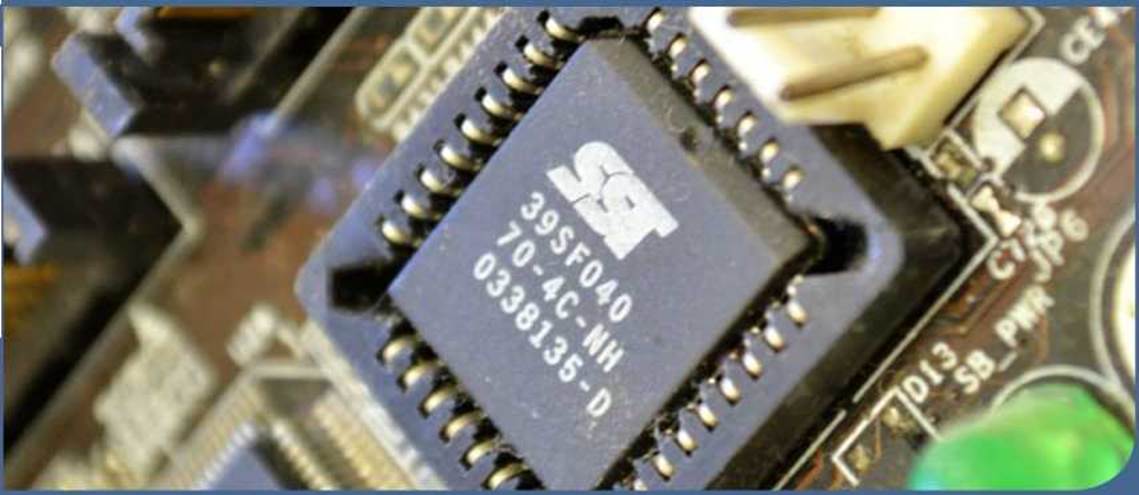
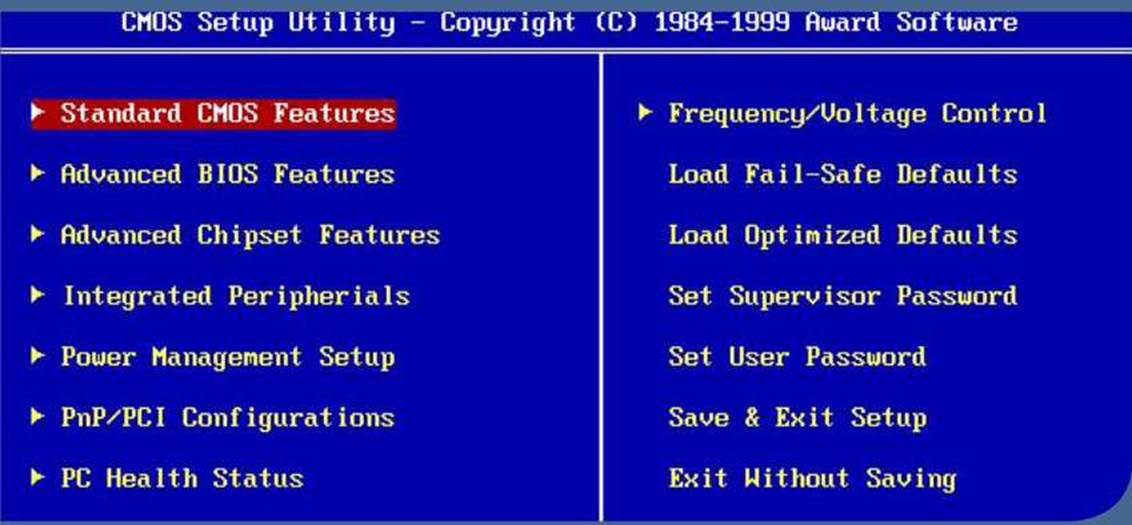
GENERAL/BUSINESS BUILD
Although a motherboard designed for gaming will work in a general build, if you don’t plan on doing any gaming, you can save money on those features.
Dual channel memory architecture
Support for DDR3/DDR3L 1600/1333 MHz memory modules
Support for ECC UDIMM 1Rx8/2Rx8 memory modules (operate in non-ECC mode)
Support for non-ECC UDIMM 1Rx8/2Rx8 memory modules
On-board Graphics – Integrated Graphics Processor
1 x D-Sub port, supporting a maximum resolution of 1920×1200(5)60 Hz
1 x DVI-D port, supporting a maximum resolution of 1920×1200(5)60 Hz
High Definition Audio 2/4/5.1/7.1 channel
Support for S/PDIF Out
High Speed LAN chip (10/100/1000 Mbit)
1 x PCI Express xl6 slot, running at xl6 (PCIEX16)
1 x PCI Express x1 slot
2 x PCI slots
4 x SATA 6Gb/s connectors 4x USB 3.0/2.0 ports 8x USB 2.0/1.1 ports

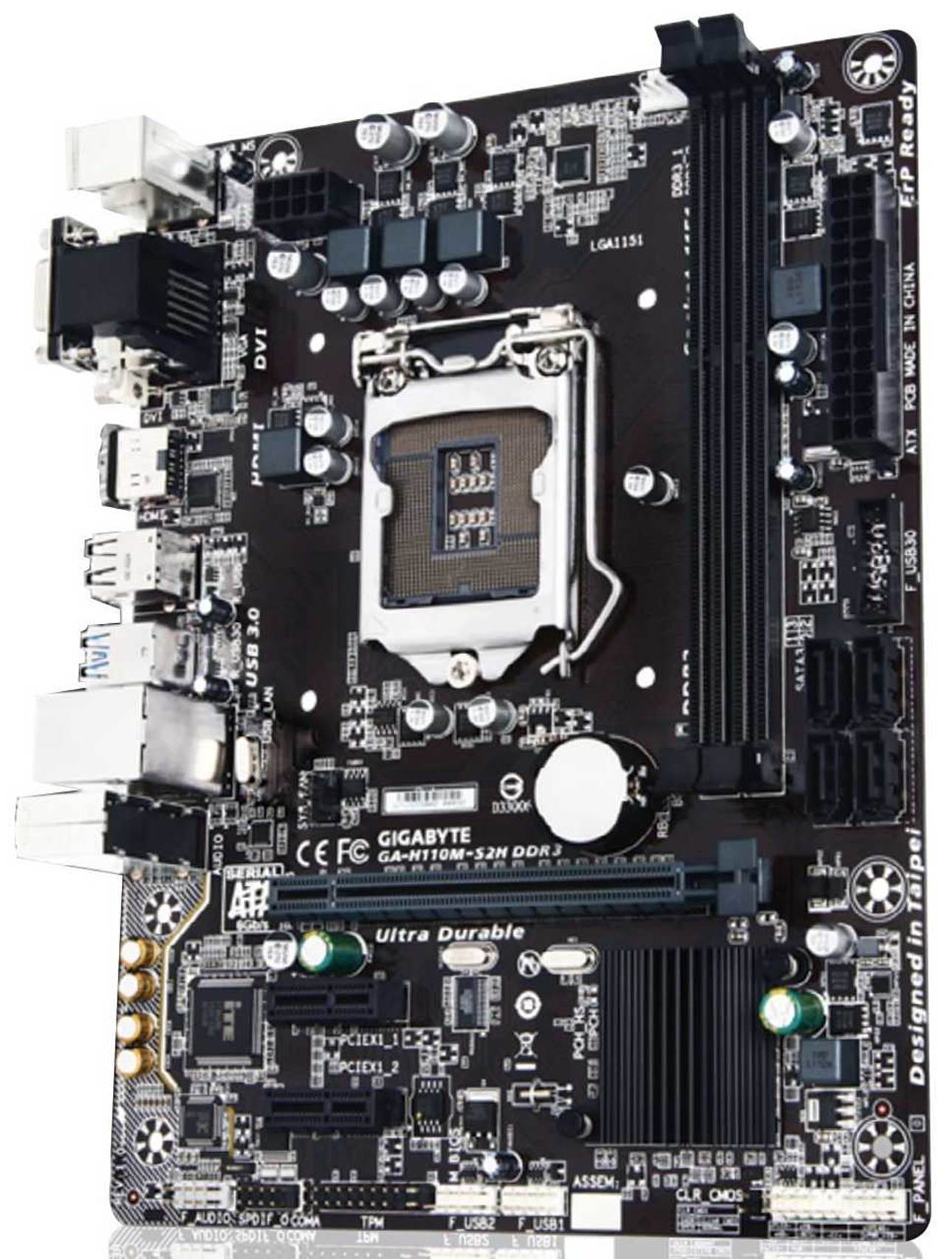
ASUS ROG Strix X299-E Gaming Review
LGA 2066 MOTHERBOARD
4/5
VERDICT
The ROG Strix X299-E Gaming is a versatile and reasonably priced X299 motherboard, though it’s best served with Skylake-X
ONCE AGAIN, WE have a new collection of CPUs that also demand a new motherboard. This ...
8
£370.54
Buy It Now
Read full review
Asus Maximus IX Extreme Review
We’re usually fond of Asus’ flagship motherboards, but while they’re usually dripping with features to make any enthusiast drool, very few people can afford them. Imagine, then, that both of those factors were multiplied several times over and ...
8.7
$209.99
Buy It Now
Read full review
ASUS ROG CROSSHAIR VI HERO Review
Old faithful AM4 motherboard made manifest
Asus is a behemoth of a company, split into different divisions dealing with graphics, peripherals, monitors, mobile devices, and everything else, with divisions upon divisions upon divisions, each with ...
9
$880.00
Buy It Now
Read full review
MSI X370 XPower Gaming Titanium Review
Hints at an integrated GPU future
It's hard to ignore the rivalries that exist in computing. Dogmatic factions stand resolute against logic, faithfully defending their torchlit companies online. Flailing argument after argument attempts in vain to ...
8.5
MSI A88XM-E45 Review
I had mixed experiences with the MSI A88XM-E45. It's a good looking Micro-ATX design that uses a classic MSI color scheme of blue and black with a chunky heat-sink on the power regulation hardware that is screwed in place. The smaller heat-sink on ...
6
$186.86
Buy It Now
Read full review
Gigabyte Aorus Z270X-Gaming 8 Review
Core frills to add to the thrills.
Afew Aorus motherboards have passed through the labs over recent issues, and this month, the Z270X-Gaming 8 joins the Gaming 9 at the top of Aorus’s Z270 stack.
A few core features differentiate the two — ...
8
Gigabyte Aorus AX370 – Gaming 5 Review
We love Gigabyte Aorus AX370 - Gaming 5 in our recent reviews, and the AM4 equivalent, the Aorus AX370-Gaming 5 looks every bit as good. Making the move from Intel to AMD, Gigabyte has included most of the features from its premium range of Intel ...
8.5
$179.98
Buy It Now
Read full review
Gigabyte GA-AB350-Gaming 3 Review
Turn on the bright lights
Ok, ok, we get it – RGB lighting is important to a certain sector of the market. But when Gigabyte’s boldest claim about this product is that it has the most advanced lighting controls in the world, we have to wonder where ...
8
ASRock Fatal1ty AB350 Gaming K4 Review
Outstanding value for money
This board is the perfect example of what an incredible value proposition Ryzen can be. Chuck this together with a R7 1700, overclock it to R7 1800X levels, and you’ve got a platform that will outperform an Intelbased ...
9
Asus Prime X370-Pro Review: Die for that won’t kill your wallet
We have to hand it to Asus – they’ve designed a very aesthetically attractive board considering.
Even better, they’ve managed to squeeze in the most expensive X370 chipset into a board at this price, which is simply astonishing value.
...
9
MSI H270 Tomahawk Arctic Review: Thankfully not frozen in time
Hailing from MSI's Arsenal Gaming range in Intel motherboards (a series based on military themes and presenting gaming-centric features), the MSI H270 Tomahawk Arctic also represents the first H270-based board we've had in the APC lab.
The ...
8
$158.60
Buy It Now
Read full review
Asus Prime Z270-A
Let's continue Intel's Kaby Lake's hype train this month with the ASUS Prime Z270-A motherboard.
Designed as the next evolution of ASUS motherboards, the Prime series of shows how ASUS engineers are passionate about empowering everyone to enjoy the ...
8.5
$188.02
Buy It Now
Read full review
Was this article helpful?
YesNo
